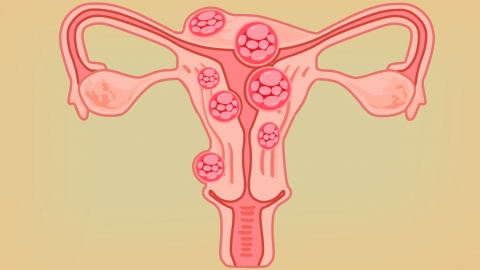What is a Nabothian cyst of the uterus?
Under normal circumstances, Nabothian cysts of the cervix may be caused by cervical injury, cervical columnar epithelial displacement, chronic cervicitis, pelvic inflammatory disease, cervical glandular duct stenosis, and other factors. If discomfort symptoms occur, it is recommended to seek timely medical treatment at a regular hospital. Detailed analysis is as follows:
1. Cervical Injury
Childbirth, abortion, or gynecological surgeries may cause local cervical injury. During the healing process, the glandular duct opening may become narrowed or blocked, leading to cyst formation. Postoperative care should include rest, avoiding strenuous activity, maintaining cleanliness at the wound site, and preventing infection. Sexual activity should be avoided during recovery, and postoperative care should follow medical advice to promote cervical tissue healing.
2. Cervical Columnar Epithelial Displacement
Cervical columnar epithelial displacement is a normal physiological phenomenon. When the columnar epithelium moves outward and covers the external cervical os, it may block the cervical glandular duct opening, hindering the discharge of secretions and forming a cyst. This condition typically does not require special treatment; maintaining daily external genital hygiene is sufficient.

3. Chronic Cervicitis
Long-term chronic inflammation of the cervix can cause mucosal hyperplasia of the cervical glandular ducts, leading to narrowing of the duct openings and retention of secretions, which may form cysts. Symptoms may include increased vaginal discharge and odor. Anti-infective medications such as azithromycin dispersible tablets, cefixime capsules, and doxycycline hydrochloride tablets should be used under medical guidance.
4. Pelvic Inflammatory Disease
If pelvic inflammatory disease remains untreated for a prolonged period, the inflammation may spread to the cervix, affecting the patency of the cervical glandular ducts and subsequently inducing cyst formation. Symptoms may include lower abdominal pressure and pain. Antibiotic treatment, such as metronidazole tablets, levofloxacin tablets, and cefuroxime axetil tablets, should be administered under medical supervision.
5. Cervical Glandular Duct Stenosis
Some women may have congenital stenosis of the cervical glandular ducts, leading to poor discharge of secretions and a tendency to form cysts. If the cyst is small and asymptomatic, regular follow-up is sufficient. If the cyst is large or affects normal life, treatments such as cervical glandular duct dilation may be performed under medical supervision to improve duct patency.
In daily life, it is important to maintain good hygiene habits and avoid frequent douching with irritating vaginal washes. A balanced diet rich in fresh vegetables and fruits can enhance physical immunity. Regular gynecological examinations should be conducted for early detection and prompt management.




